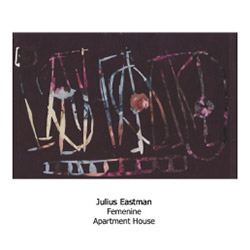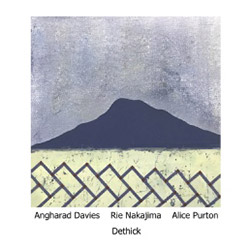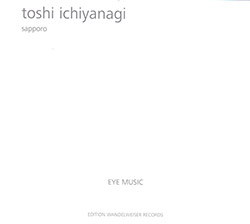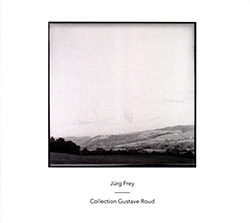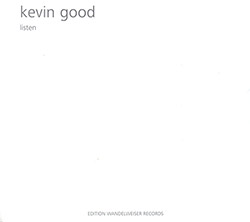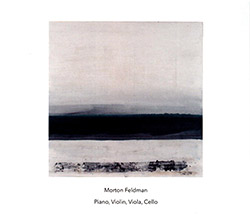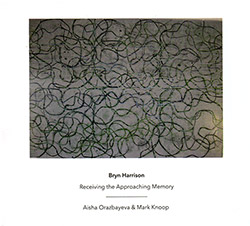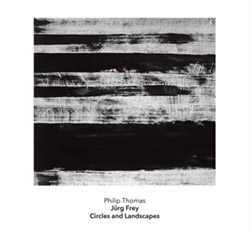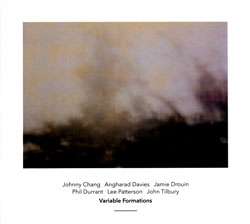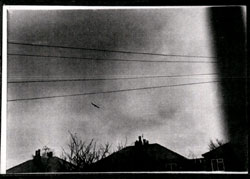
Using clarinet, household objects, field recordings & domestic electronics, Anett Nemeth applies Cage's concepts of indeterminancy and chance as frameworks for two extended compositions.
Out of Stock
Reordered on 4/12/2023
Quantity in Basket: None
Log In to use our Wish List
Shipping Weight: 1.00 units
Sample The Album:
Anett Nemeth-piano, clarinet, household objects, field recordings, electronics
Click an artist name above to see in-stock items for that artist.
Label: Another Timbre
Catalog ID: atb-08
Squidco Product Code: 14943
Format: CDR
Condition: New
Released: 2011
Country: UK
Packaging: Oblong, cardstock foldover in plastic sleeve
Interview with Anett Németh
Could you explain the title 'A Pauper's Guide to John Cage'?- I admire Cage as both a thinker and a composer. He's a starting point for a lot of what I do musically. In this piece I took a couple of concepts from him, in particular the use of chance procedures to determine 'time brackets' for the distribution of sounds across the piece. This is obviously similar to what Cage was doing in his late 'number pieces', though I should make clear that this didn't apply to the piano part. That was the first track laid down, and is like a spine for the composition. I recorded on a friend's piano, more or less improvising round a restricted range of intervals and pitches. The other elements in the piece were then constructed around the piano part using the chance-derived time brackets. Using chance procedures is great because It establishes connections between different elements that you would never think of otherwise. Somewhere in writing about the early days of indeterminacy, Cage reports the young Christian Wolff as saying that once you combine any two sounds together, after a few listens they sound like they belong together, however incongruously different they are. I think that's true, and the juxtapositions that the timings threw up often came to feel right in themselves, though I did allow myself some flexibility with the time brackets so that I could work some of the more difficult connections and assist their 'belonging together'. Also I treated some of the sounds electronically - though not the piano track, which remains 'pure' throughout. Plus of course I chose the particular sounds I was using in the first place - which Cage usually did too - so the chance procedures were applied within a given sonic framework.
At some level I'm sure my choice of sounds was also influenced by Cage's music: a combination
of traditional instruments (piano and clarinet), mixed with sounds produced by a variety of
everyday 'non-musical' objects, plus field recordings, and some very simple electronics - either
sine tones or treatments of the other recordings. Overall the whole process had a clarity and
simplicity - and it's above all an appreciation of those qualities that I feel I have learnt from
reading and listening to Cage. It took me a long time to realise that you don't have to compose
with complex schemas or use expensive equipment; often the simplest solution is the best. So, for example, for this piece apart from the piano, I used objects that were lying round my home as the sound sources, and the field recordings were made literally metres from the house where I was living. You don't have to travel to exotic locations to gather material for a composition; use what's around you, and is available for free. The title reflects the fact that the means for producing this music were so simple and meagre: A Pauper's Guide to John Cage.
Thinking of the field recordings you use, which - as you suggest - consist of extremely 'ordinary' sounds, is there also a connection with Cage in wanting music to engage with the everyday?
- Yes, undoubtedly: music as part of the regular flow of everyday life rather than being something apart from or opposed to it, or something you place on a pedestal. That has a political dimension as well, of course, though I won't go into that now. But at the same time for me there's also an interest in using elements from the everyday in ways which suggests other levels of existence, or something otherworldly. This is hard to articulate because you end up sounding romantic or mystical - and I don't want to go there at all. But the skill is to touch or illuminate something particular or beautiful that dwells unnoticed in the folds of the everyday. So, for instance, if you simply play back a field recording made on a city street it quickly becomes boring, but for me composing is partly about struggling with that sort of mundane material, moulding it, adding to it, working it to make suggestions and intimations of other things, but without losing the grounding in the everyday sonic world. That's what I'd like to be able to do.
What about 'Early Morning Melancholia': does that use Cageian elements or techniques too?
- Not really, no. Although superficially the two pieces may sound similar, in other ways Melancholia is very different from A Pauper's Guide. As the title suggests, I wanted to explicitly engage with emotion in Early Morning Melancholia, which is actually a very
un-Cageian thing to do. I wanted to compose a piece which addressed the way in which some negative emotions work. For example, mourning or depression are often experienced as overwhelmingly powerful emotions, but simultaneously and paradoxicallythey also induce a kind of numbness, as if you're feeling everything at three steps removed, through a thick fog. The piece tried to address that duality: representing the deep force of an emotion while also at the same time holding it at a distance.
To my ears the piece has a dream-like quality, which is beautiful and actually quite uplifting.
- Well for me it's above all sad music, but I can see that that sense of numbness may sound
dream-like - though in an odd way because the emotions that the piece is dealing with are
typically experienced in the insomniac hours, precisely when you're not asleep and dreaming.
So it's a weird, half-waking kind of 'dream'. But I feel uneasy talking like this. All that I've said
about wanting the piece to deal with a particular emotional experience was my starting point,
but once you begin building the work it takes on a momentum of its own, and usually moves
away from what you originally intended. In the end I think the music has to stand or fall on its
own merits, and whatever I felt I was doing when composing it is irrelevant. You shouldn't
need a preface or a programme note to explain a piece of music, and if what a listener takes
from a composition is completely different from the composer's intentions, that's fine. I
nearly called it 'Composition #14' to avoid having to explain anything or engage in this kind
of discussion, and perhaps I should have....
Your music reminds me of some of the Wandelweiser composers, Michael Pisaro in particular. Are there links or influences there too?
- I don't know about influences. I'm not connected with the Wandelweiser collective, and wouldn't want to be part of any group of composers. Musically I'm completely self-taught, I don't earn any money from music, and I'm stubbornly determined to stay as far away from institutions as possible. But perhaps that's something I do have in common with some of the Wandelweiser composers. They generally exist outside the academic world of New Music, which is a good thing because that's usually so deadening. And then there's certainly a sense of clarity, of paring things back to the bare essentials in a lot of Wandelweiser music that I think is interesting. It relates back to Cage, of course, who is a major influence for them as well. They probably take that further than I do, and perhaps I could learn from that. But then I don't want to imitate what anyone else is doing; I think I should just keep on with whatever feels interesting to me.
Artist Biographies
Track Listing:
1. A Pauper's Guide to John Cage 26:52
2. Early Morning Melancholia 16:57
Electro-Acoustic
Electro-Acoustic Improv
Compositional Forms
Improvised Music
John Cage
Free Improvisation
Electroacoustic Composition
Objects and Home-made Instruments
Instant Rewards
Search for other titles on the label:
Another Timbre.




